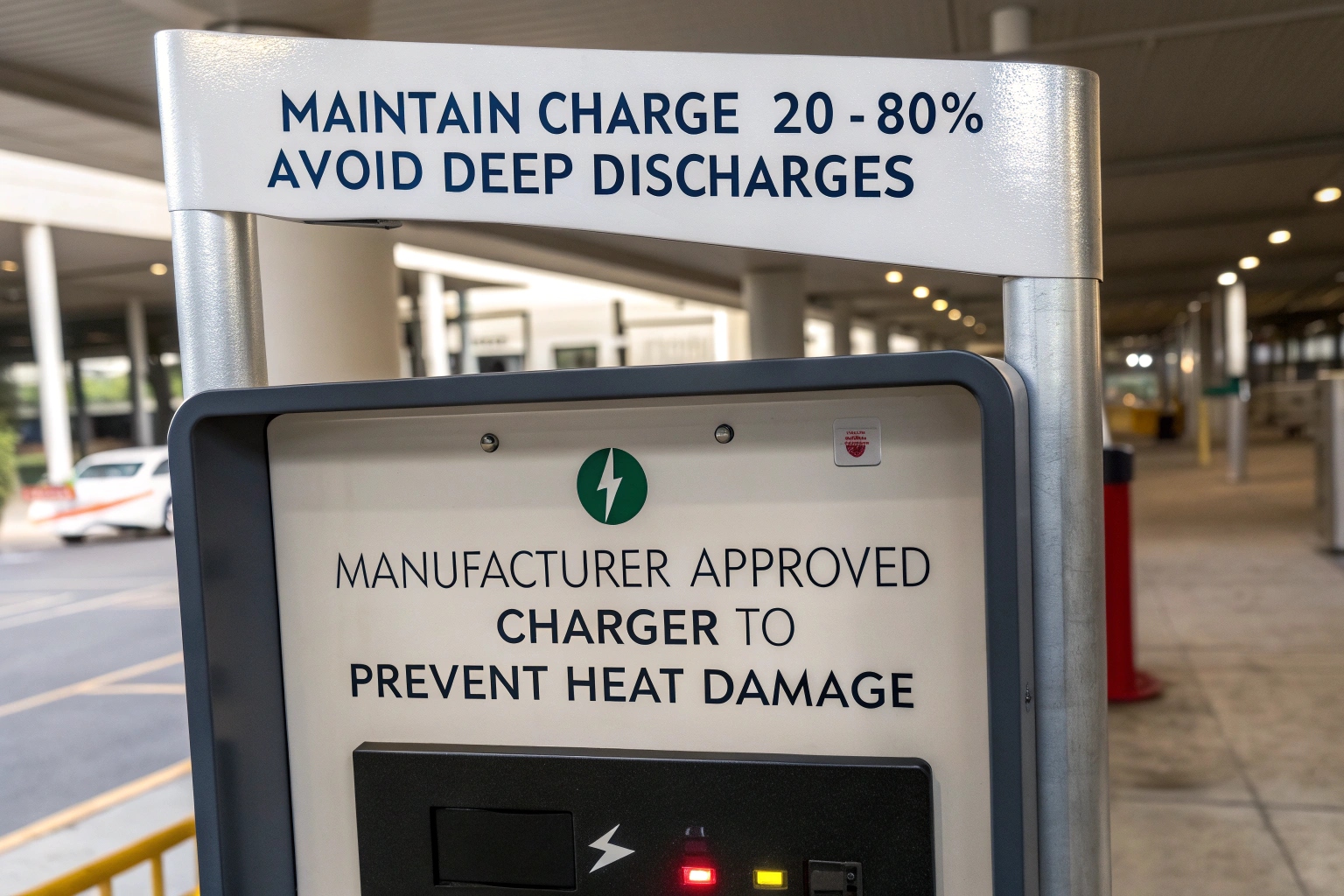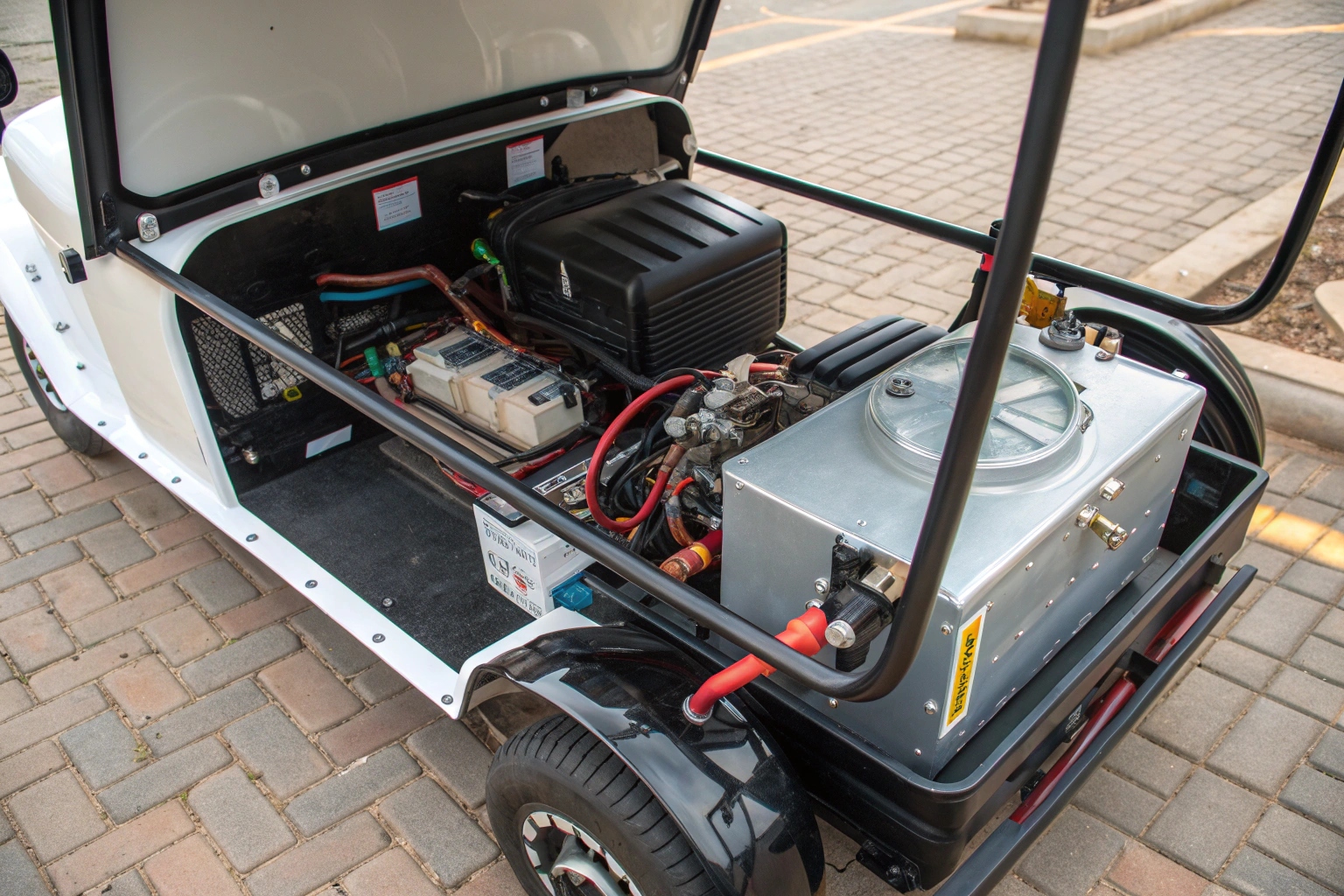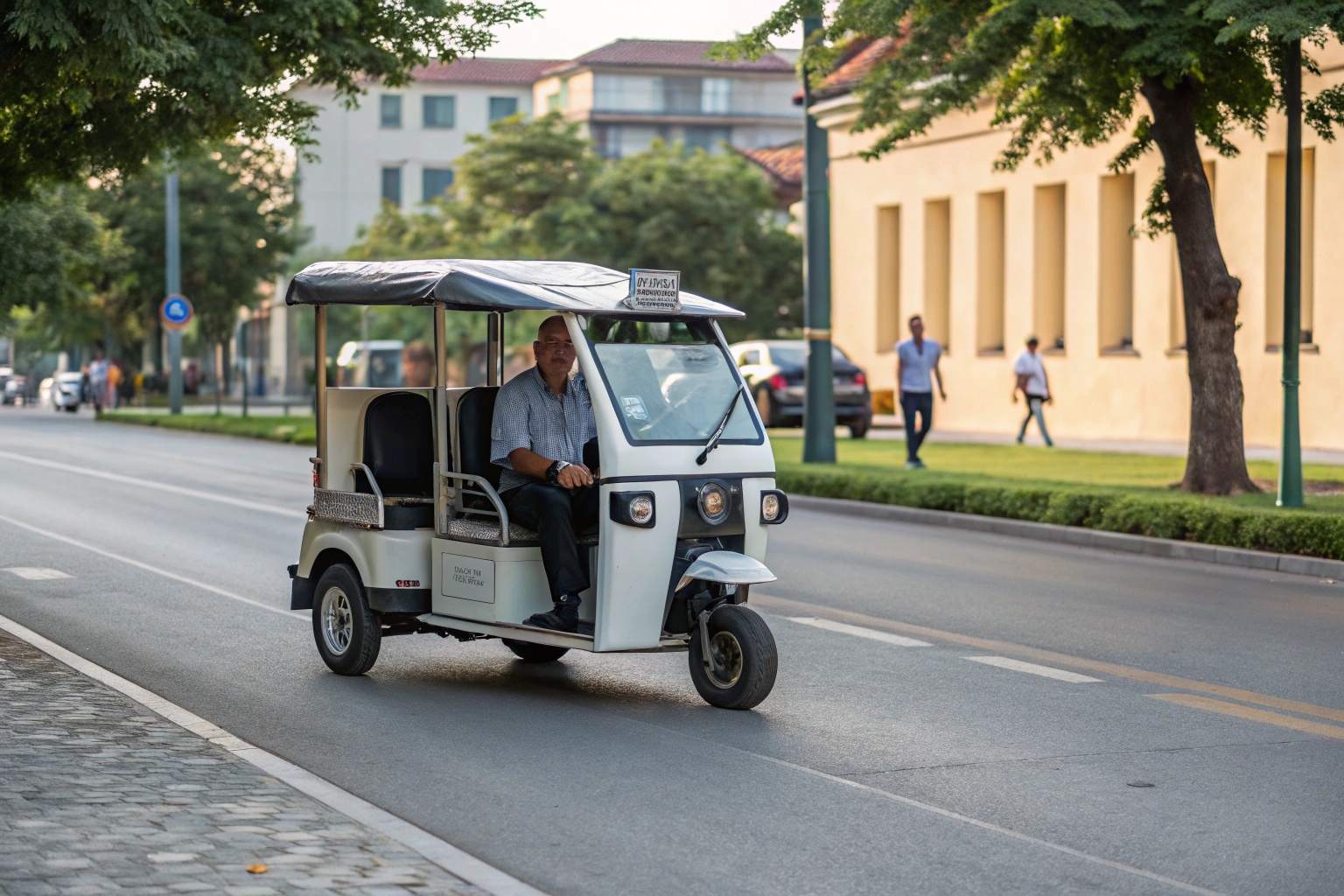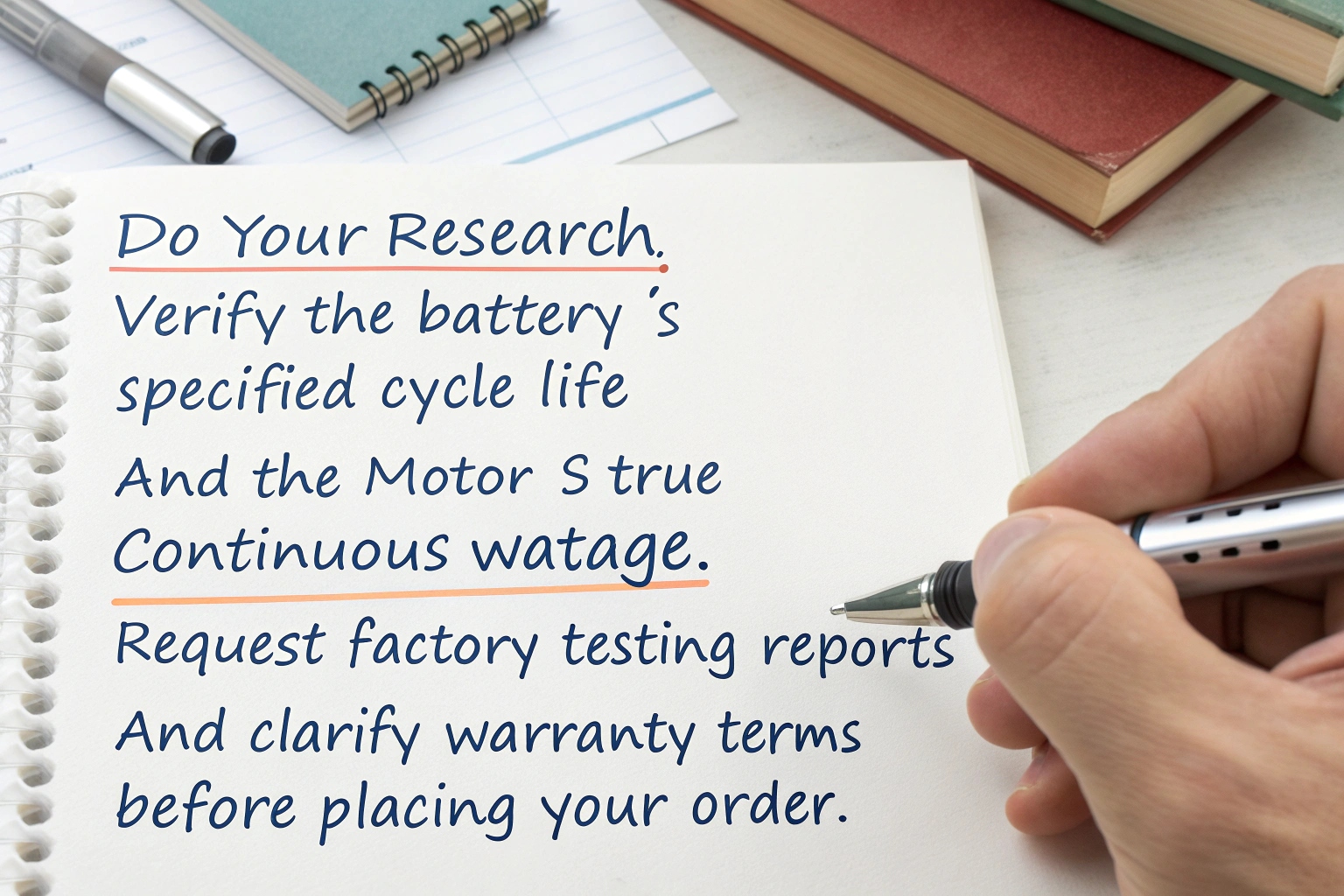Your fleet's batteries are failing too early and motors are burning out. Vehicle downtime is killing your profits and the repair bills are piling up, making your investment feel like a liability.
By implementing proper charging routines, training drivers on gentle operation, and performing simple, regular maintenance, you can dramatically extend the life of both the battery and the motor. This protects your investment and keeps your fleet profitable.

As a factory exporting electric tricycles, I've seen it all. The most successful fleet operators are the ones who treat their vehicles' batteries and motors with care. These are the heart and muscle of the tricycle. I had a client in the Philippines who was replacing their lead-acid batteries every 12 months. After we walked them through a better charging and maintenance plan, they started getting closer to 18-24 months out of each set. That's a huge cost saving across a fleet of 50 vehicles. The tips aren't complicated, but they make all the difference.
How Can Proper Charging Practices Extend Battery Life in Electric Tricycles?
You charge your trikes to 100% every night, but the batteries still die quickly. You're buying expensive replacements far too often, directly eating into your daily revenue.
Avoid both deep discharges and consistent overcharging. For lithium batteries, aim to keep the charge between 20-80%. Always use the manufacturer-approved charger to prevent heat damage and ensure optimal battery health.
Think of a battery like a muscle; constant extreme stretching and contracting will wear it out faster. The same is true for charging cycles. Consistently draining a battery to 0% or leaving it on a charger long after it hits 100% causes stress and degradation. Studies show that a lithium battery kept in the 20-80% range can last up to 40% longer than one that is constantly cycled from 0% to 100%. While lead-acid batteries benefit from a full charge to prevent sulfation, they are still damaged by being left on the charger for too long. A simple rule we give all our clients is to plug the charger into the wall outlet first, then connect it to the vehicle. This prevents power surges that can damage the battery management system (BMS).
- Practice: Charge before the battery drops below 20%.
- Effect: Prevents deep discharge, which permanently damages battery cells.
- Practice: Unplug the charger soon after it reaches full, or use a smart charger.
- Effect: Avoids overcharging and heat buildup, which degrade battery chemistry.
- Practice: Use only the charger supplied by the factory.
- Effect: Ensures the correct voltage and amperage are used, protecting the battery.
What Maintenance Steps Protect Motors in Tricycle Trucks and Passenger Tuks?
Your motors are overheating and losing power. Dirt and water are causing premature failures, forcing you to take vehicles off the road for costly and time-consuming repairs.
Maintain the motor casing to allow proper heat dissipation. Check that all electrical connections are tight and free of corrosion. Finally, protect the motor from high-pressure water sprays during cleaning.

The electric motor in your tricycle is built to be reliable, but it's not indestructible. Neglect is its biggest enemy. Up to 25% of premature motor failures are caused by poor maintenance. The most common problem I see is overheating caused by a buildup of mud and grime. The outer casing of the motor has fins designed to act as a heat sink. If these are caked in dirt, the motor can't cool itself effectively, leading to internal damage. Another simple but critical check is the electrical connections. Vibrations can cause terminal bolts to loosen over time, creating a poor connection that generates heat and reduces performance. Training a local mechanic to perform a quick monthly check can prevent the vast majority of motor-related issues.
Monthly Motor Maintenance Checklist:
- Clean: Use a brush and low-pressure water to clean mud and dirt from the motor casing.
- Inspect Wires: Visually check the wires leading to the motor. Look for any cracks, fraying, or signs of wear.
- Check Connections: Ensure the main power terminals on the motor are tight. If you see any corrosion, disconnect the battery, then clean the terminals with a wire brush.
- Listen: During a test ride, listen for any grinding or unusual noises, which could indicate a bearing issue.
How Do Driving Habits Influence Battery and Motor Durability?
Your drivers are pushing the vehicles hard. You see them accelerating like they're in a race and piling cargo high, and you know this abuse is causing premature wear and tear.
Smooth and steady driving is key. Gentle acceleration, respecting the official payload capacity, and maintaining a consistent speed reduce the strain on both the battery and the motor, making them last significantly longer.

Aggressive driving is a fleet killer. Research shows it can shorten an EV's component lifespan by 15-20%. Every time a driver floors the accelerator, they cause a huge power draw from the battery and put immense torque stress on the motor. The same happens when the vehicle is severely overloaded. It forces the motor to work much harder, generating excess heat, while draining the battery at an accelerated rate. This is why driver training is one of the best investments a fleet operator can make. We advise our government and B2B distributor clients to create simple driving guidelines. The goal is efficiency, not speed. A driver who accelerates smoothly and maintains proper tire pressure will not only extend the life of the vehicle but also get more range out of a single charge, increasing the number of deliveries they can make in a day.
| Habit | Impact on Battery & Motor |
|---|---|
| Good: Smooth Acceleration | Lowers peak current draw, reduces motor heat, and increases range. |
| Poor: Harsh Acceleration | Creates high current spikes, stresses battery cells, and overheats motor windings. |
| Good: Respecting Load Limits | Keeps motor and controller within their designed operating temperature. |
| Poor: Overloading | Puts extreme strain on the motor, gearbox, and frame; drains the battery very quickly. |
What Should Importers Check Before Ordering Tricycle Trucks or Passenger Tuks in Bulk?
You're about to invest in a container of tricycles. How can you be sure the batteries and motors are high quality and won't fail within the first year?
Do your research. Verify the battery's specified cycle life and the motor's true continuous wattage. Ask for factory testing reports and clarify the warranty terms for these critical components before you place your order.

This is where you protect your investment from the very beginning. As a Tuk Tuk Tagagawa, I respect a buyer who asks tough questions. It shows they are a serious partner. An alarming 65% of B2B warranty claims are related to battery and motor issues, so this is the area to focus on. Don't be fooled by peak wattage claims for a motor; what matters is the continuous power rating, which tells you what it can handle all day long. For batteries, ask for the guaranteed cycle life. For a quality lithium pack, this should be over 1,500 cycles. We provide detailed spec sheets for all our components, and we welcome pre-shipment inspections where your agent can verify these parts. A reliable supplier will be transparent and work with you to ensure you're getting a durable product.
Importer's Pre-Order Checklist:
- Battery Specs: What is the brand of the cells? What is the guaranteed cycle life?
- Motor Specs: What is the continuous wattage rating? Is it a known brand?
- Controller: Is the controller matched to the motor? Is there firmware support?
- Test Reports: Can the supplier provide factory QC reports for the battery and motor?
- Warranty: What are the specific warranty terms for the battery, motor, and controller?
Pangwakas na Salita
Protecting your fleet's battery and motor is simple. Consistent charging habits, gentle driving, routine maintenance, and smart purchasing are the four pillars that will maximize their lifespan and your return on investment.

